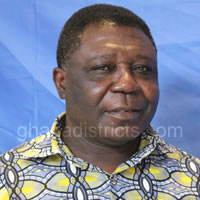Literacy and Education
Education is an important aspect of societal development. It is the process of acquiring knowledge, skills, values and attitudes through academics and training to fully develop individual capacities for societal wellbeing. Ashaiman Municipal Assembly places a lot of emphasis on education and educational policies as an avenue to development in the municipality and also ensures the realization of MDG 2 goal of universal primary education by 2015.
Literacy
Table 3.9 displays Ashaiman Municipal population of 11 years and older by sex, age and literacy status. The 2010 PHC defined literacy as the ability to read and write a simple statement with understanding. If a person can only read but cannot write or can write but cannot read, he or she is not literate. Similarly, if a person was literate some time ago but cannot read and write with understanding at present then he/she is not literate. The options were: None, English only, Ghanaian Language only, English and Ghanaian Language, English and French, English, French and Ghanaian Language, and Other.
The Table shows that one out of every eight of the persons 11 years and older in the Municipality are not literate (cannot read or write any of the languages). A little over half of the population (persons 11 years and above) are literate and can read and write in English language only, and less than one percent of the literate population are literate in both English and French.
The level of illiteracy in the Municipality increases directly with age groups up to 25-29 years and declines up to age group 60-64 years. It is observed that whiles English only literate population decreases as age increases (inversely related), literate in Ghanaian language only increases as age group increases (directly related). The disaggregated data on literacy follows the same trend for both sexes except for Ghanaian language only where the female population increases much higher than the male population as age increases.
Level of Education
Figure 3.1 represents school attendance by sex in the Ashaiman Municipality. Of all persons aged 3 years and over, approximately 11 percent (11.1) percent have never attended school, 34 percent are currently in school while almost 55 percent have attended school in the past. There are slightly more males currently in school 34.4 percent than females 33.7 percent. About 58.7 percent of males have been to school in the past compared with 51.3 females in The Municipality.
The level of education for persons 3 years and older is displayed on Table 3.10. It can be observed that 43.2 percent of the populations currently attending school are in Primary school with less than one percent in Vocational/Technical schools. The table further shows that more females are in Primary school (44.5 percent) than males (41.9 percent). The situation is however different at higher levels of education. At the tertiary level for instance there are 4.5 percent males currently in school as compared with only 2.9 percent females. The trend is similar for both sexes for school attendance in the past.
Date Created : 11/17/2017 7:34:56 AM



